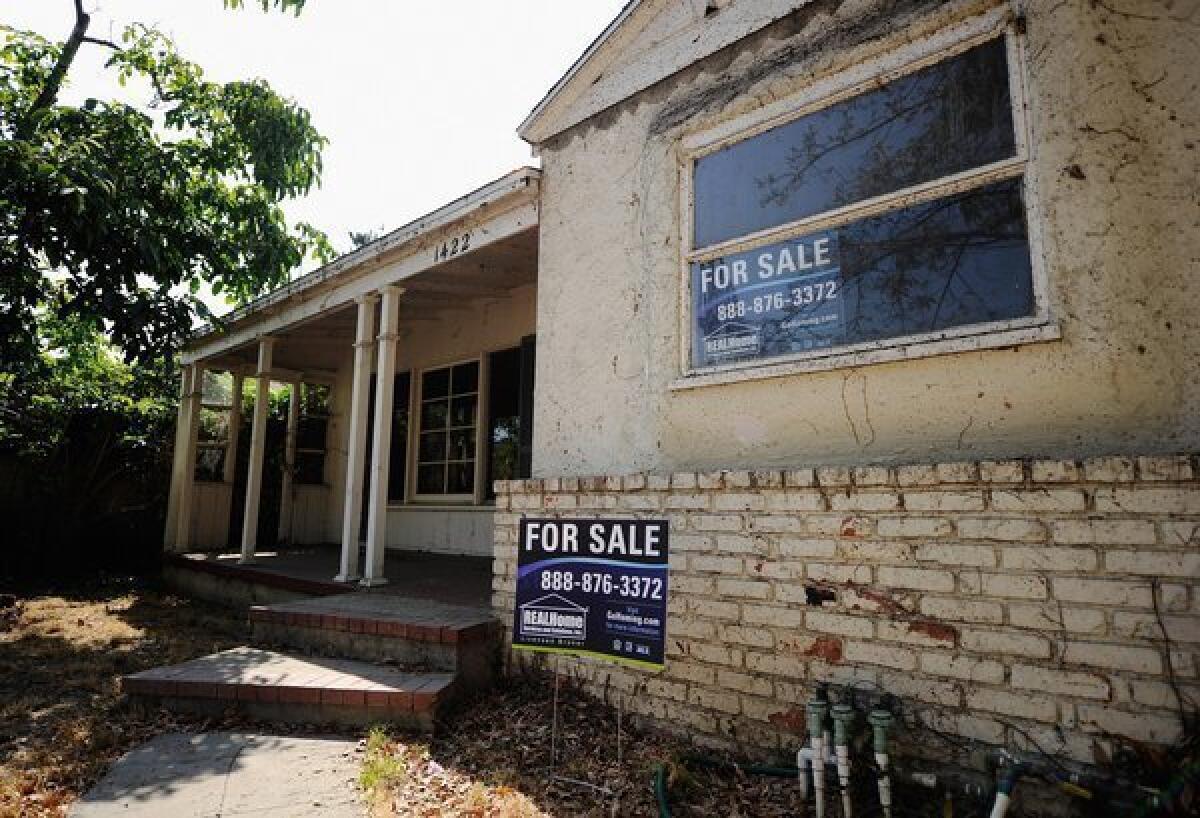Foreclosure filings in California increase in the second quarter

- Share via
New California foreclosure filings rose considerably in the first quarter over the second but were still down 53% from the same period a year prior and held to their second-lowest level in seven years.
Notices of default shot up 39% in the second quarter, according to a report by the real estate firm DataQuick. Lenders filed 25,747 notices of default during the three-month period that ended June 30. Nevertheless, it was the lowest level since the fourth quarter of 2005.
The big increase came after notices of default plunged during the early months of 2013 after the so-called “Homeowner Bill of Rights” went into effect. That new series of state laws restricted the foreclosure process in California.
VIDEO: How high can home prices climb?
Notice of defaults peaked in the first quarter of 2009 when 135,431 such actions were filed. The firm DataQuick attributed the downward trend to rising home prices. The median home price had risen to $344,000 at the end of the second quarter. That was up 15% from the previous quarter and 27% from the same period last year.
“A foreclosure only makes sense when the home is worth less than what is owed on it,” DataQuick President John Walsh said in a news release. “As home values rise, fewer homeowners owe more on their homes than the homes are worth.”
Notices of default continued to be filed against properties in the state’s most affordable neighborhoods. Zip Codes with a median sales price of below $200,000 had an average of 4.2 notices of default filed for every 1,000 homes. Comparatively, an average of about 2.8 default notices were filed for ZIP Codes priced between $200,000 and $800,000. And there was an average of 1.1 default notices filed in ZIP Codes with median prices above $800,000.
That trend played out on a county-level basis. Loans were less likely to go into default in San Francisco, Santa Clara and San Mateo counties with the probability for default at its highest in Solano, Fresno and Riverside counties.
Most of the loans going into the default process were from between 2005 and 2007, with the median origination quarter for defaulting loans being the third quarter of 2006. That quarter has been the median origination quarter for four years now, which means that people were probably making the worst loans in California during those three months.
The biggest lenders foreclosing in the state were Wells Fargo, who were the beneficiaries of 3,969 notices of default filed; JP Morgan Chase, with 3,801; and Nationstar with 2,565. Since some borrowers can fall behind on multiple loans on the same home, those 25,747 default notices filed during the second only involved 24,999 homes.
The number of homes actually lost to foreclosure fell 28% from the prior quarter and 55% from the same period a year earlier. A total of 9,840 trustees deeds were filed during the three-month period ended June 30. Filing a trustees deed represents the final step in the foreclosure process.
An estimated 54% of homes sold to foreclosure went to investors. That was up from 47% in the prior quarter and 39% during the same period a year earlier.
ALSO:
Low inventory spurs home price gains
Southland home prices up 28.3% in June
New residential construction drops in June
More to Read
Inside the business of entertainment
The Wide Shot brings you news, analysis and insights on everything from streaming wars to production — and what it all means for the future.
You may occasionally receive promotional content from the Los Angeles Times.








